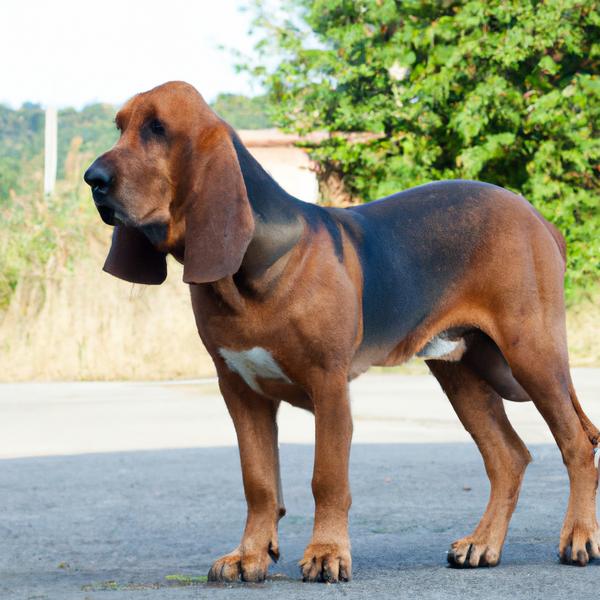Bloodhound vs. Boxer: Breed Differences and Similarities
Weight Gain Potential
Which breed eats more: Bloodhound or Boxer?
Bloodhound has average risk of obesity, needs daily walks and quality diet to maintain healthy weight.
Boxer has high obesity risk, needs regular exercise and food control to maintain healthy weight.
Hypoallergenic
Are Bloodhounds or Boxers hypoallergenic, or neither?
Unfortunately, neither Bloodhound nor Boxer are hypoallergenic, which may not make them the best choice for dog lovers who suffer from pet allergies.
Temperament
What are the personalities of Bloodhound and Boxer dogs?
Affectionate
Gentle
Independent
Outright
Tempered
Stubborn
Brave
Confident
Fearless
Intelligent
Playful
Bright
Energetic
Friendly
Loyal
Shedding Level
Do Bloodhounds shed more than Boxers, or which breed sheds more, Bloodhounds or Boxers?
Bloodhound or Boxer dogs are not heavy shedders, but they will lose a significant amount of hair each year. To decrease the amount of shedding, you can regularly brush your Bloodhound or Boxer. This will remove loose hair and keep their coat growing in the same direction.
Watchdog Ability
Which dog breed makes a better watchdog, the Bloodhound or Boxer?
Avoid Bloodhounds as watchdogs - they're not effective.
Choose a Boxer if you want a top-notch watchdog. This breed takes guarding seriously, and may not require much training, though obedience or guard dog training can improve their skills.
Origin
What is the origin of Bloodhound and Boxer dog breeds?
Europe
Germany
Ancestry
What are the origins of Bloodhound and Boxer breeds?
flemish hound, talbot hound
Mastiff, Livestock Dog
Breed recognition
Which kennel clubs recognize/register Bloodhound and Boxer?
American Canine Registry
American Kennel Club
America's Pet Registry
Canadian Kennel Club
Dog Registry of America Inc.
Federation Cynologique Internationale
Kennel Club of Great Britain
North American Purebred Registry, Inc.
Australian National Kennel Council
Continental Kennel Club
National Kennel Club
New Zealand Kennel Club
United Kennel Club
American Canine Registry
American Kennel Club
America's Pet Registry
Canadian Kennel Club
Dog Registry of America Inc.
Federation Cynologique Internationale
Kennel Club of Great Britain
North American Purebred Registry, Inc.
American Canine Association, Inc.
Australian National Kennel Council
Continental Kennel Club
National Kennel Club
New Zealand Kennel Club
United Kennel Club
Canadian Canine Registry
Date of Birth
When were Bloodhound and Boxer breeds first developed?
middle ages
1800s
Breed Group
What is the Breed Group of Bloodhound and Boxer?
Hound (AKC:1885)
Scenthounds (UKC)
Working (AKC:1904)
Guardian (UKC)
Eye Color Possibilites
What are the eye colors of Bloodhound and Boxer dogs?
Hazel
Amber
Brown
Nose Color Possibilites
What are the natural nose colors of Bloodhound and Boxer?
Black
Brown
Black
Coat Color Possibilites
What are the natural colors of the coat for Bloodhound and Boxer breeds?
Black
Brown
Red
Fawn
Sable
Black
White
Fawn
Brindle
Coat Length
What is the typical coat length for Bloodhound and Boxer breeds?
The Bloodhound and Boxer breeds are known for their short coat.
Coat Density
What is the density of the coat of Bloodhound and Boxer?
Coat Texture
What is the hair texture of Bloodhound and Boxer?
Straight
Litter Size
What is the usual litter size for Bloodhound and Boxer?
Bloodhound and Boxer, can have a litter of 10-12 puppies each on average. Nonetheless, it's important to keep in mind that litter size can differ significantly between individual dogs. Various factors such as the mother's health, breeding history, and genetics can have an impact on litter size.
Adaptability
Bloodhounds have average adaptability to changes in lifestyle and living environments compared to other breeds.
Boxers are known for their adaptability and can adjust well to different environments and lifestyle changes.
Health Issues
Between Bloodhound and Boxer, which breed is more prone to health problems?
The Bloodhound breed is generally very healthy, requiring minimal vet visits. Still, it's important to keep an eye on their health and seek veterinary care when needed.
While the Boxer breed is generally healthy, occasional vet check-ups are still necessary to address any health concerns.
Major Concerns
What are the major health concerns for Bloodhound and Boxer breeds?
Otitis Externa
Entropion
Gastric Torsion
Cherry Eye
Hip And Elbow Dysplasia
Cardiomyopathy
Subvalvular Aortic Stenosis
Corneal Opacities
Degenerative Myelopathy
Minor Concerns
What minor health issues should be kept in mind when owning Bloodhound and Boxer?
Bone And Joint Problems
Hypothyroidism
Gastric Torsion
Colitis
Hip And Elbow Dysplasia
Cvi (Wobbler’S Syndrome)
Von Willebrand's Disease
Hypothyroidism
Occasional Tests
What occasional tests are recommended for Bloodhound and Boxer breeds?
Eye
Hip
Elbow
Thyroid Tests
X-Rays
Cardiac
Hip
Blood
Thyroid Tests
X-Rays
MRI
Eye Examination
Energy
How do the energy levels of Bloodhounds and Boxers compare?
Bloodhound and Boxer breeds are high-energy dogs, thus an active lifestyle suits them well.
Social Needs
Bloodhound vs Boxer social needs comparison
Bloodhound and Boxer have very high social needs. These needs include regular mental and physical stimulation, a job or purpose, and companionship. They thrive in environments where they have a lot of interaction with humans and other dogs.
Exercise Needed
Bloodhound vs Boxer exercise need comparison.
Bloodhounds need high physical activity and are ideal for active individuals, but not suitable for sedentary lifestyles or small apartments.
Boxers require significant physical activity and suit those with an active lifestyle.
Sleeping Need
Which of the two sleeps the most/least: Bloodhound or Boxer?
Bloodhound and Boxer are active dogs that may not require as much sleep as other breeds. However, they still need enough sleep to stay healthy.
Drooling Tendency
Which drools more/less, Bloodhound or Boxer?
Bloodhound excessively drools, consider a different breed if not appealing.
Boxer has low drooling tendency, suitable for those who dislike drool marks.
Tendency to Bark
Do Bloodhounds or Boxers bark more/less frequently?
Bloodhound dogs bark and howl frequently and are not recommended for quiet homes.
Boxer dogs are generally less vocal than other breeds and only bark when necessary, such as to alert their owner or communicate.
Territorial
Is the Bloodhound or Boxer a better guard dog?
Bloodhound dogs are not typically good guard dogs due to their lack of protective nature and weak territorial drive.
Boxer dogs are highly protective and make excellent guard dogs due to their strong instinct to defend their territory and owners, and their high level of vigilance.
Mouthiness
Mouthiness Comparison: Bloodhound vs Boxer?
Roaming urge
Bloodhound vs Labrador: Running away tendency?
Prey Drive
Bloodhound or Boxer - which breed has a higher level of prey drive?
Past times
What are some enjoyable activities and ways to keep Bloodhound and Boxer entertained?
Snack time, Walk, Petting, Sniffing, Not walking, Eating treats, Walking, Cuddle, Hide & Seek
Walk, Run, Jog, Training, Grooming, Eating out, Wubba, Fetch, Hike, Running, Walking, Petting, Sniffing, Digging, Eating Snacks, Jumping, Jumping around, Walks, He liked to run, Back rubs, Fast walking, Playing, Hiking, Playing catch, Cuddling, Chase, Tug-of-war, Chew, Nap, Go to Park
Activity Level
Which breed has higher energy, Bloodhounds or Boxers?
Bloodhounds are medium-energy dogs and typically enjoy socializing and playing casual or even sustained games of chase with other dogs. They may also have occasional periods of barking or racing around the house.
Boxers are high-energy dogs. They need mental as well as physical exercise. These dogs require a lot of your involvement and without it they can, and will, become problematic dogs.
Tolerance of being left alone
Walks per Week
How many miles should Bloodhound or Boxer walk each week?
There's really no limit to how far you walk your dog as long as they're comfortable. For Bloodhound, it's at least 8 miles / week. Just remember to build distance and stamina gradually over time.
There's really no limit to how far you walk your dog as long as they're comfortable. For Boxer, it's at least 10 miles / week. Just remember to build distance and stamina gradually over time.
Activity per Day
Do Bloodhounds or Boxers require more exercise?
In general most Bloodhounds usually need at least 60 minutes of exercise daily. This can be spread across the day and include all sorts of high-energy activities, like walking, running and playing.
In general most Boxers usually need at least 90 minutes of exercise daily. This can be spread across the day and include all sorts of high-energy activities, like walking, running and playing.
Grooming
Which breed is easier to maintain in terms of grooming, Bloodhounds or Boxers?
The Bloodhound has low grooming needs and is easy to maintain.
The Boxer is a low-maintenance breed that doesn't require much grooming.
Brushing Frequency
What is the recommended brushing frequency for Bloodhound and Boxer dogs?
Bloodhound and Boxer should be brushed at least once a week. Of course, you can give them more frequent brushes if you find that they are still shedding a lot.
Brushing Tools
What brushing tools are used for Bloodhounds and Boxers?
Slicker Brush
Nail Clipper
Pin Brush
Slicker Brush
Nail Clipper
Cups
How much food should be given to Bloodhound or Boxer in cups?
For an average 90-110 pound (41 - 50 kg) Bloodhound feed 3 cups daily. But, keep in mind, the amount you feed is going to be dependent on the quality of the food you are feeding.
For an average 65-80 pound (29 - 36 kg) Boxer feed 2.5 cups daily. But, keep in mind, the amount you feed is going to be dependent on the quality of the food you are feeding.
Daily Cost
Which breed has a higher daily cost, Bloodhound or Boxer?
The average cost of a Bloodhound is somewhere $2.80 - $3.20 per day.
The average cost of a Boxer is somewhere $2.50 - $3.20 per day.
Monthly Cost
Which breed has a higher monthly cost, Bloodhound or Boxer?
The average per month expenses of a Bloodhound is between $84 - $95. This makes an average of $1008 - $1140 per year. It will be on the higher side when the dog is still small because it will need more frequent visits to the vet, shots.
The average per month expenses of a Boxer is between $74 - $95. This makes an average of $888 - $1140 per year. It will be on the higher side when the dog is still small because it will need more frequent visits to the vet, shots.
Intelligence
Comparing Intelligence: Bloodhounds vs Boxers
Bloodhound is a very intelligent and trainable breed.
Boxers are average in obedience intelligence but have a high IQ and may cause trouble if left unsupervised.
Sensitivity Level
How do Bloodhound and Boxer compare in sensitivity?
These breeds are more sensitive than others and easily overwhelmed by new surroundings and people. Bloodhound and Boxer need gentle handling and a calm, stable home environment with positive reinforcement training.
Affection Dependance
Which is the more affectionate dog breed: Bloodhound vs Boxer?
Apartment Friendly
Which breed is more apartment-friendly: Bloodhound or Boxer?
The Bloodhound is not suitable for apartments and requires a large yard to thrive. Pent-up energy in small spaces can lead to destructive behavior.
The Boxer is a great apartment dog, thriving with sufficient exercise and time outside as part of their daily routine.
Child Friendly
Do Bloodhounds or Boxers have a friendlier temperament towards children?
Bloodhounds make excellent family pets for kids due to their gentle, protective nature and calm temperament.
Boxers are good with kids if socialized and trained from a young age.
Senior-friendly
Which dog is more suitable as a pet for the elderly - Bloodhound or Boxer?
Cat Friendly
Do Bloodhound or Boxer breeds have a better compatibility with cats?
Bloodhounds are very friendly with cats and make great companions for them.
Boxers are average in their friendliness toward cats and tend to do well with them, especially if raised together.
Dog Friendly
Which breed is more sociable with other dogs: Bloodhound or Boxer?
Bloodhounds are generally very friendly towards other dogs, with a happy and affectionate temperament.
Boxers are less friendly towards other dogs, but can improve with socialization.
Pet friendly
How do Bloodhound or Boxer dogs interact with other pets?
Stranger Friendly
Which breed is more friendly with strangers: Bloodhound or Boxer?
Bloodhounds are highly friendly around strangers.
Boxers are averagely friendly around strangers but benefit from early socialisation.
Playfulness
Which breed is more playful between Bloodhound and Boxer?
Bloodhounds are very playful, so adopting an older one might be a better option for a more relaxed experience.
Boxers are a playful breed that needs daily playtime to be happy.
Trainability
How do the trainability levels of Bloodhounds and Boxers compare?
Bloodhounds are popular for their ease of training and quick learning ability.
Boxers are usually easy to train but require consistency to fully obey commands.
Compare Bloodhound with other breeds
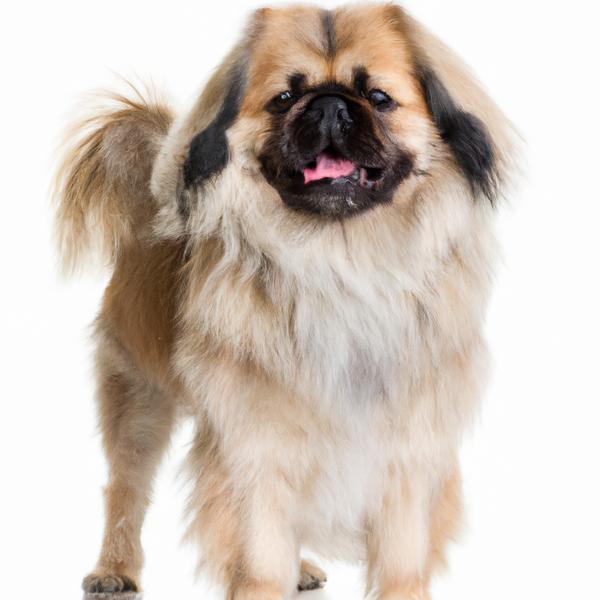
Tibetanpei Spaniel
Bloodhound vs Tibetanpei Spaniel
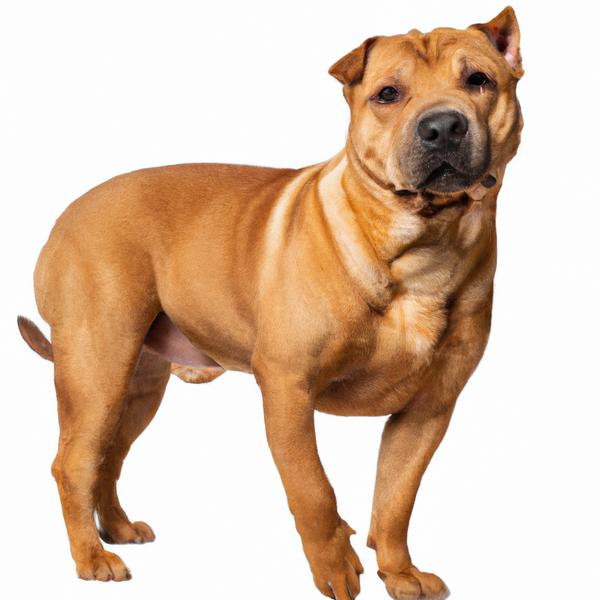
Shar-Pei Pitbull Terrier
Bloodhound vs Shar-Pei Pitbull Terrier
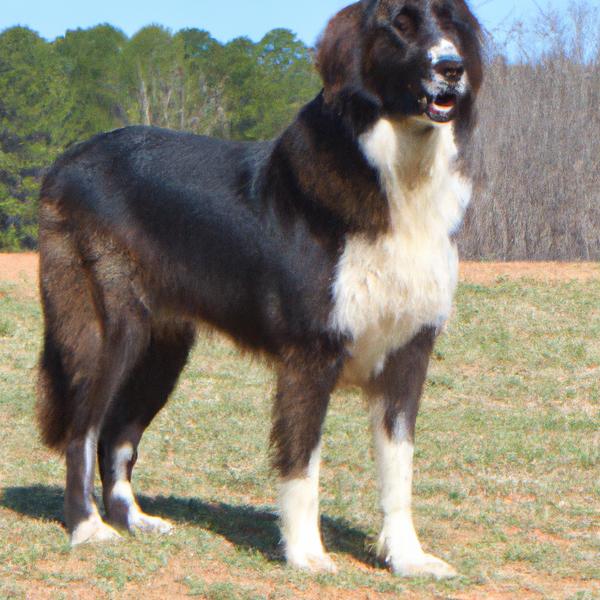
Mastapeake
Bloodhound vs Mastapeake
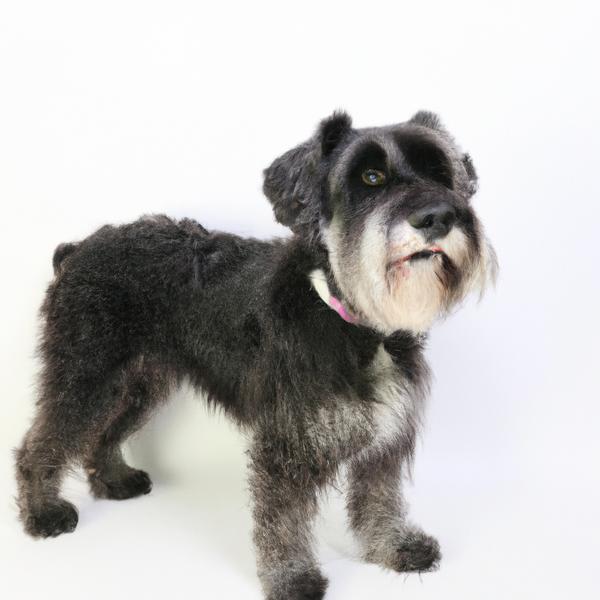
Mini Bolonauzer
Bloodhound vs Mini Bolonauzer
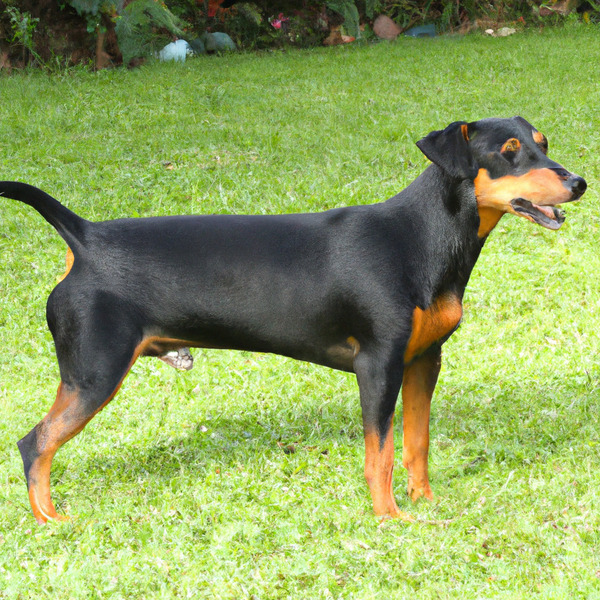
Decker Hunting Terrier
Bloodhound vs Decker Hunting Terrier
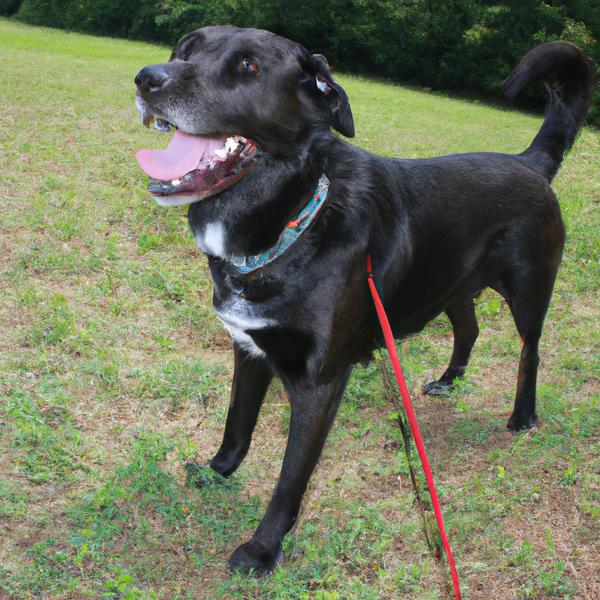
Labrottie
Bloodhound vs Labrottie

Papi-poo
Bloodhound vs Papi-poo
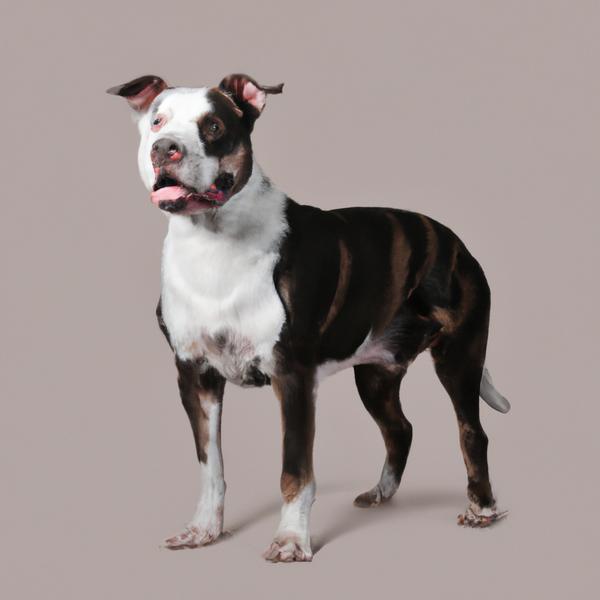
American Bull-Aussie
Bloodhound vs American Bull-Aussie

Border Collie Lakeland
Bloodhound vs Border Collie Lakeland

English Toy Terrier
Bloodhound vs English Toy Terrier
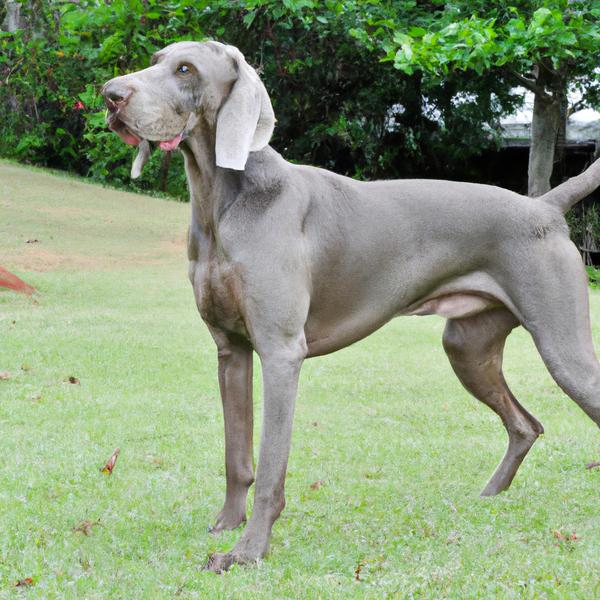
German Shorthaired Weimaraner
Bloodhound vs German Shorthaired Weimaraner
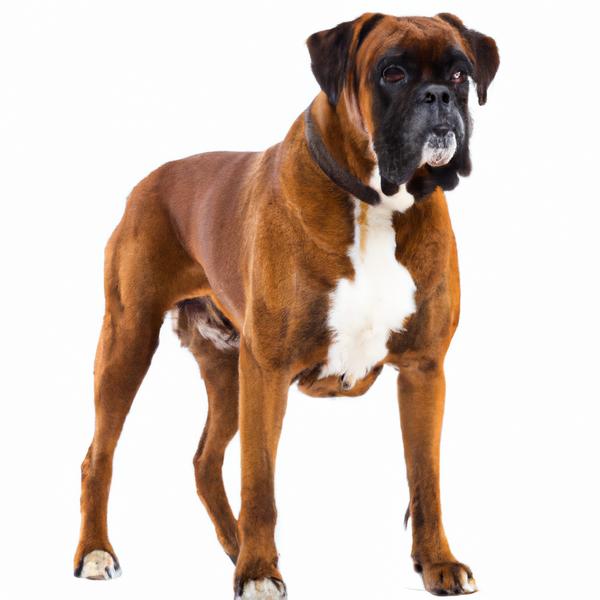
Boxer
Bloodhound vs Boxer
